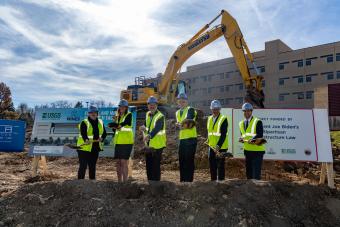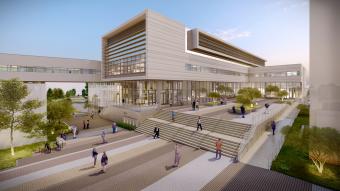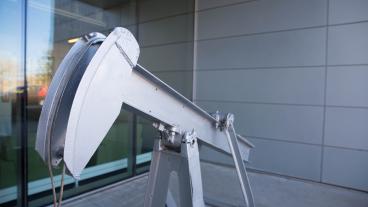USGS, Mines break ground on new facility focused on energy and minerals research

Representatives from the U.S. Geological Survey and Colorado School of Mines began a new chapter of their partnership today, breaking ground on an innovative USGS Energy and Minerals Research Building.
The Bipartisan Infrastructure Law is providing $167 million for construction of the new facility, which will begin immediately and is forecast for completion in fall 2026.
The groundbreaking ceremony featured remarks from U.S. Department of the Interior Principal Deputy Assistant Secretary for Water and Science Michael Brain, USGS Director David Applegate, Mines President Paul C. Johnson and members of Colorado’s Congressional delegation.
Energy and minerals are essential to every economic sector, to every member of society, and to the technologies of the future.
“Thanks to President Biden’s Investing in America agenda, we are beginning a bright new chapter for scientific innovation and energy and minerals research,” said Principal Deputy Assistant Secretary for Water and Science Michael Brain. “Through the USGS and Colorado School of Mines enduring partnership and overlapping strengths, this new facility will allow us to build up America's workforce in the energy and minerals sectors, helping us solving critical mineral and supply chain challenges.”
“The Energy and Minerals Research Facility will bring USGS scientists and Mines faculty and students together to focus on solving the critical mineral and energy challenges of today and the future. With the combined expertise of the USGS and Mines, plus new state-of-the-art laboratories and analytical capabilities, this facility will be the top energy and minerals research center in the nation and the world. We can think of no better home for this facility than the Mines campus, where we have already had a many-decades-long partnership with the USGS and where we’ve been dedicated to solving the challenges around energy and minerals for 150 years and counting,” said Paul C. Johnson, president of Colorado School of Mines.
The celebration began by highlighting the research that will be conducted by USGS and Mines scientists, faculty and students, providing a glimpse at the types of innovative research the facility will house. Topics touched on the future of both the energy and mineral sectors --including critical minerals origins, supply chains, and markets, Earth MRI, alternative energy resources such as hydrogen and geothermal, methane emissions from orphaned and abandoned wells and carbon capture, utilization and storage.
When done, the 190,000-square-foot building will house the USGS Geology, Geophysics and Geochemistry Science Center and the Central Energy Resources Science Center, both currently located at the Denver Federal Center. It will be occupied by about 250 USGS researchers and about 170 Mines faculty and students working side by side, expanding upon the two institutions’ long-standing partnership and history of collaborative research.
The USGS and Mines' complementary strengths will advance new frontiers in strengthening critical minerals supply chains, developing a sustainable and just energy supply, innovating to modernize the nation’s mapping, tackling legacy pollution, and launching a hydrogen economy.
Designed by global architecture firm Perkins + Will, the shared research facility will be home to state-of-the-art laboratories and collaboration spaces for USGS and Mines scientists, as well as a café, classroom and spaces for Mines graduate students. A connection between the new facility and the existing USGS Geologic Hazards Science Center – home to the National Earthquake Information Center – is also incorporated into the design.
The Bipartisan Infrastructure Law makes long-term investments in the science, data, and expertise underpinning the nation’s sustainable development of natural resources, technology investments, STEM workforce, and innovation economy.

# # #
The USGS provides science for a changing world. Learn more at www.usgs.gov or follow us on Facebook @USGeologicalSurvey, YouTube @USGS, Instagram @USGS, or Twitter @USGS.
Colorado School of Mines is a public R1 research university focused on applied science and engineering, producing the talent, knowledge and innovations to serve industry and benefit society – all to create a more prosperous future. Learn more at mines.edu.




